Discover why Chianti had such a bad rep, what changed and why you need to try this red wine beef stew.

What is your first thought of Chianti?
Mine is the cheap straw basket served at the Reagle Beagle Lounge on Three’s Company. Did you know that basket is called a fiasco?
Oh and there’s also the infamous Lady and Tramp spaghetti scene with a bottle of Chianti.
But Italian wine is made to pair with food. Chianti is loved its for its acidity, freshness and bright cherry flavour.
It just has a terrible reputation in North America.
Chianti’s Troubled Past – Unexpectedly Too Popular
After the war there was much demand for Italian products and flavours. It’s why spaghetti bolognese exists only outside Italy – North Americans craved Italian flavours and wanted its wine to pair with it.
Unfortunately it also meant exported products were in such high demand that they quality decreased.
And the once great Sangiovese-based Chianti was allowed to have 20% white grapes blended into a lesser version ripe for the Americas.
Quantity over quality.
Not surprisingly this cheaper wine was regarded as poor quality and it suffered, especially as winemakers in California were starting to create better wine at the same price.
Ironically a fiasco is an event with a disastrous outcome and so Chianti suffered.
In the last 1980s Italian winemakers decided to change the regulations and return to creating the high quality of wine it from the Renaissance Era.
But it’s taken time for Chianti to make its comeback, and now it’s an under appreciated wine.

Chianti Wine Region
Lust for those rolling hills of Tuscany? This is the home of Chianti.
I once thought Chianti Classico meant it was made in the classic tradition – silly me! Like Bordeaux wine in France, Chianti can only come from one region.
There are eight sub zones in Tuscany that are permitted to make it but the highest quality generally comes from the regions Classico and Ruffimo.
Chianti Classico only contains red grapes and must consist of at least 80% Sangiovese grapes – one of the most difficult to grow in the region.
The standard Chianti Classico may be released in October but the Riserva must be aged for at least 24 months.
Americans and Canadians import more wine from Italy than any other country. Americans buy twice as much Italian wine as Australian and three times more than France.

Look for the Gallo Nero – The Black Rooster
If you’re confused about what to get look for the black rooster, which guarantees you’re getting a Chianti Classico with at least 80% Sangiovese grapes.
The legend of the gallo nero is fantastic folklore and potentially could be true?
Florence and neighbouring Siena had fought over the borders to their regions.
To settle the battle they would each send a horseman out at dawn.
Wherever the horses met would be the border and so there was pressure to find the fastest rider to secure the most land.
Legend says that Siena is known for its pudgy white roosters but in Florence they had a cantankerous thin black rooster they hadn’t fed the night before.
And so he woke up early while the well-fed white rooster cozily slept in.
This is why most of the Chianti region is with Florence. The black rooster remains a symbol of the region.

Castello di Gabbiano
At Gabbiano everything old is new again.
When the region emerged as a wine mecca in the 1200s, winemakers Castello di Gabbiano were well established in the historic region.
Although Gabbiano is known as one of the premier winemakers that hasn’t stopped them from evolving.
They are experimenting with a wild yeast and sourcing Italian Oak from outside Florence called Roverella.
For them the definition of a great Chianti evolves with new techniques but always maintaining the standard.
And while Chianti Riserva accounts for 20 per cent of the wine production for the region, at Gabbiano they dedicate 50% of their production.
It’s not surprising that Gabbiano Chianti DOCG is the #1 highest volume selling Chianti in America
But the best part of this winery is that if you like the wine you can stay there.
There are also cooking classes, events, an olive harvest. At Il Cavaliere restaurant Executive Chef Francesco Berardinelli creates food pairings.
And his Chianti red wine beef stew pairs perfectly with the Estate’s wine.

Chianti Beef Stew
Chefs love Chianti, it’s a wine that pairs so well with food. Chianti loves beef and earthy flavours like mushrooms.
Chianti has a moderate body with great acidity and so it can hold its own with bold red sauces and ragu.
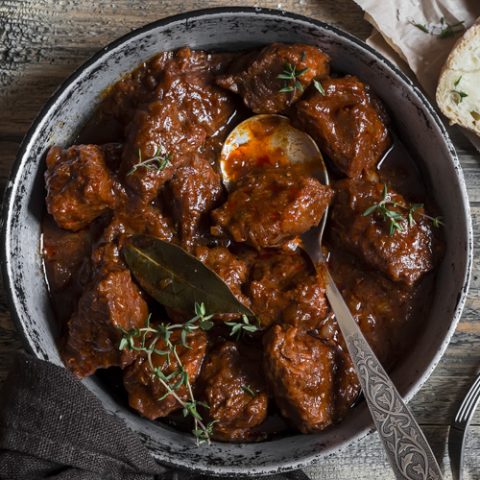
Red Wine Beef Stew
Discover why Chianti had such a bad rep, what changed and why you need to try this red wine beef stew.
Ingredients
- 1.75 lbs beef flank marinating steak
- 2 tbsp olive oil
- 4 cloves garlic peeled
- 2 stalks celery cut into one-inch chunks
- 1 sprig fresh rosemary
- 2 cups chopped ripe tomatoes or canned if not in season
- 1.25 cups Chianti wine, such as Gabbiano Chianti Classico
- 1 tsp Kosher salt
- 1 tsp freshly ground black pepper
Instructions
- Cut beef into 2-inch (5 cm) cubes.
- In Dutch oven or heavy ovenproof saucepan, heat oil over medium-high heat; sauté beef, garlic, celery and rosemary for 2 minutes.
- Add tomatoes, wine, salt and pepper; bring to a boil, lower heat and simmer, stirring occasionally, for 5 minutes.
- Cover and braise in preheated 300°F (150°C) oven for 2-1/2 to 3 hours, stirring occasionally, until beef is fork-tender and sauce is thickened.
- Skim any fat from surface of stew; remove rosemary, celery and garlic. Serve beef with sauce spooned on top.
Notes
- If liquid evaporates during braising, stir in 1/2 cup (125 mL) boiling water at a time to stew.
- Serve beef with your favourite sides, such as mashed potatoes and buttered green peas.
Nutrition Information:
Yield: 6 Serving Size: 1 Amount Per Serving: Calories: 606Total Fat: 38gSaturated Fat: 14gTrans Fat: 0gUnsaturated Fat: 19gCholesterol: 151mgSodium: 508mgCarbohydrates: 6gFiber: 1gSugar: 2gProtein: 45gNutritional information is provided as a courtesy and is an estimate only. This information comes from online calculators. Although BaconisMagic.ca attempts to provide accurate nutritional information, these figures are only estimates.
Pin it: Red Wine Beef Stew
Disclosure: This is a sponsored post but as always my opinions and love for wine remains my own. Castello di Gabbiano asked me to simply share my thoughts about Chianti Classico where I was able to reminisce about Three’s Company and lust for this red wine beef stew. For more information about Castello di Gabbiano find them on Facebook, Instagram and their website for more great recipes like the Chianti beef stew.

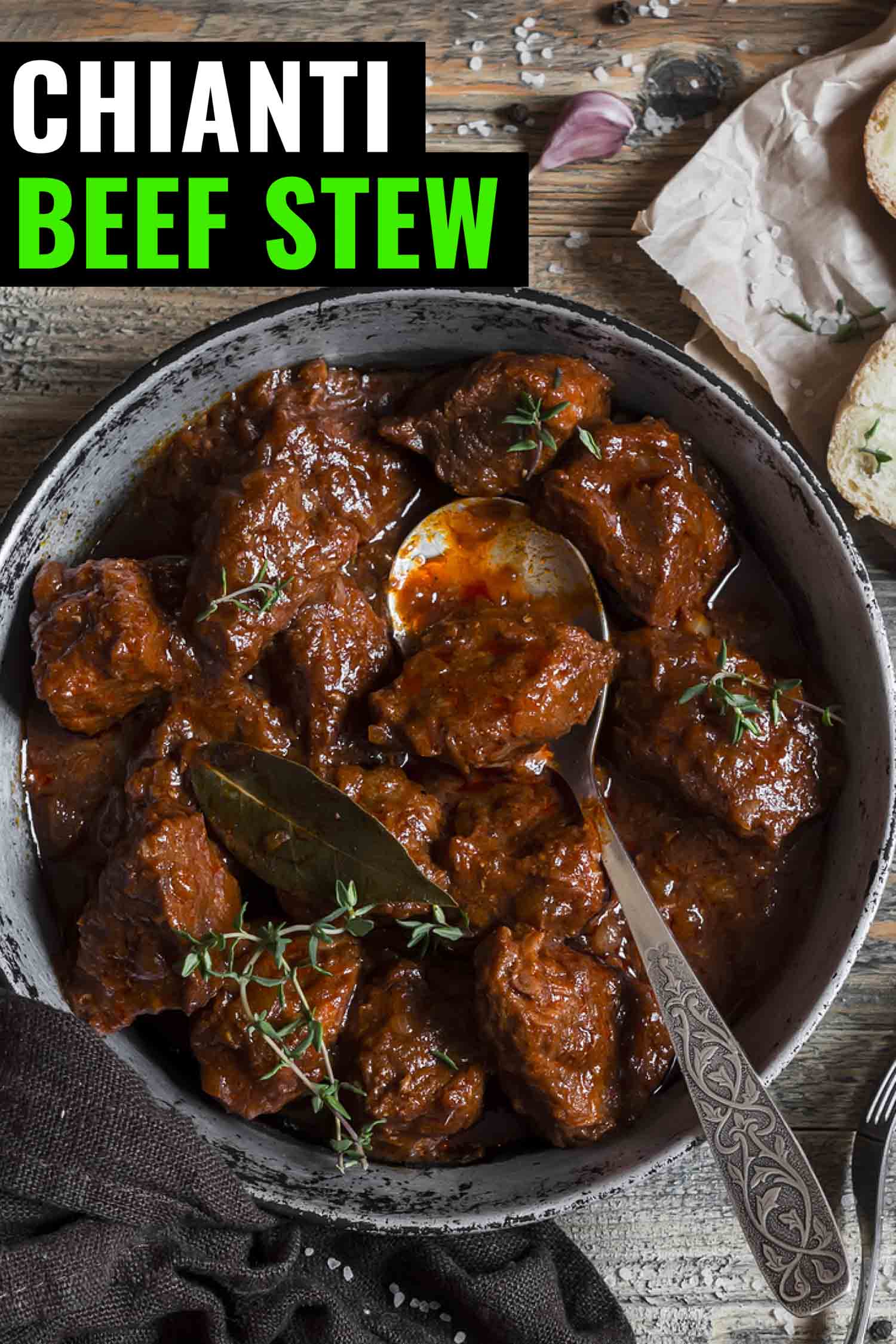
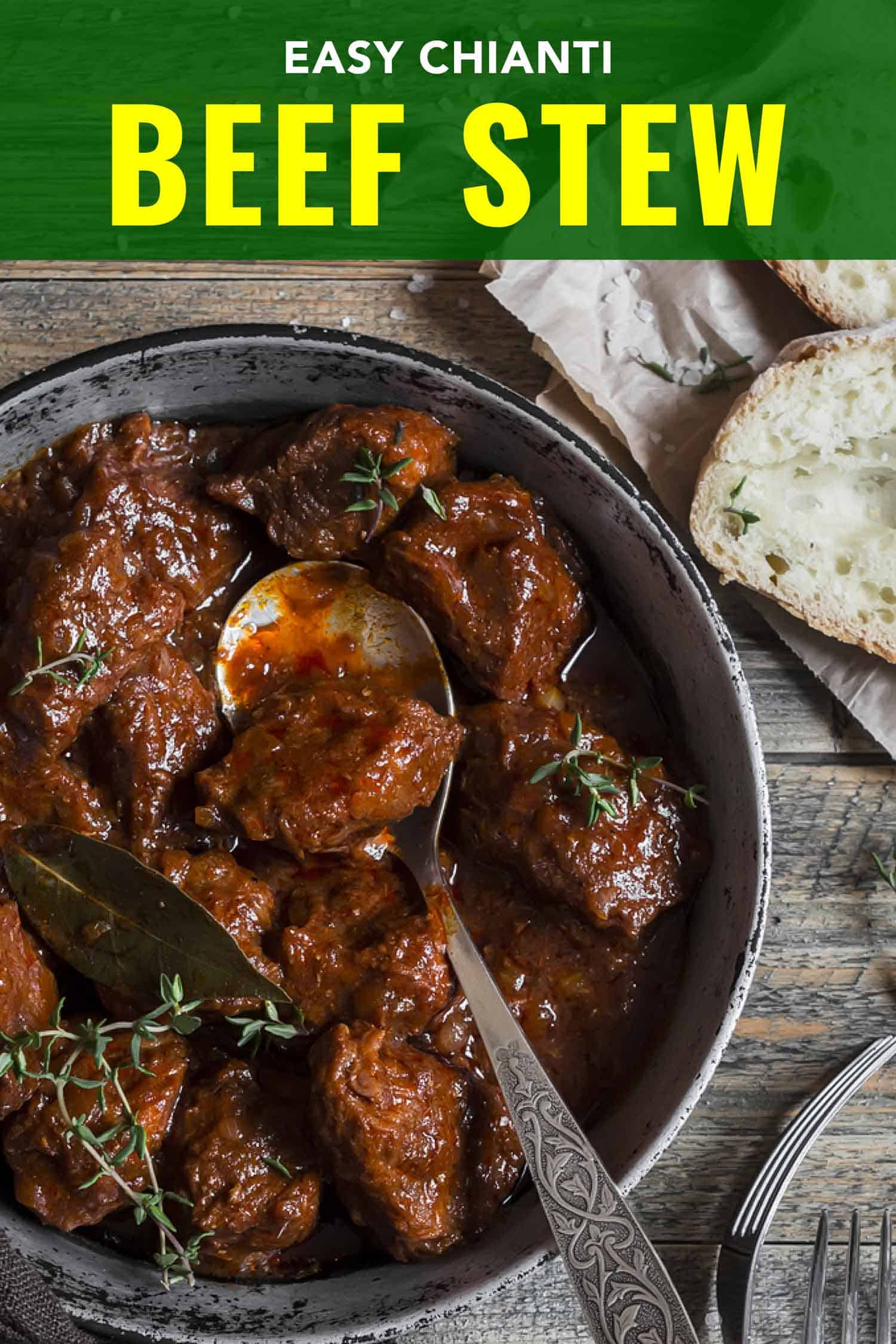
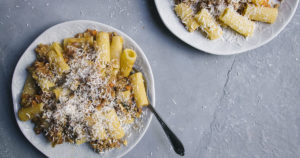
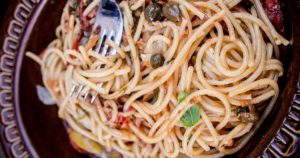
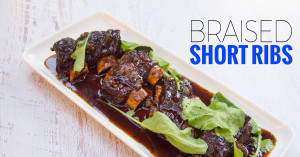
This is a wonderful post Ayngelina – I, too remember the old style bottles from when my parents used to drink it but it certainly is a wine that has come a long way. Neil attended the dinner here in Toronto with Gabbiano and our post is coming soon. You make some great points here that I may link back to ! (Oh and that beef stew? SO good!)
super informative post! I didn’t know that was why Chianti had a bad rap…I thought it was because of Silence of the Lambs (JK!)
Many old world wines are truly made to drink with food and I’m looking forward to trying this gorgeous stew with a glass of vino!
Always good to learn more about a wine maligned by those who rely on reputation more than reality … thanks for the well-researched post!
Oh those Tuscan hills are so gorgeous! Love learning more about wine and that the old varieties like this are making a come back! Also, that stew? Yes please 🙂
I’ve always love Chianti and this just reinforces my love! Now all I need is a glass and some of that delicious stew!
Interesting post! And a great recipe!
I have always loved Chianti, and have neven been one to go for trendier drinks. The classic Chianti (and Rioja) for me is perfect. I had actually put it down to finding it harder to find in Canada, as it was so readily available in England.
Loved the background stories, the photographs and that video wants me want to go out there. There is something about Chianti and Beef flavours working really well together, and I love your recipe too.